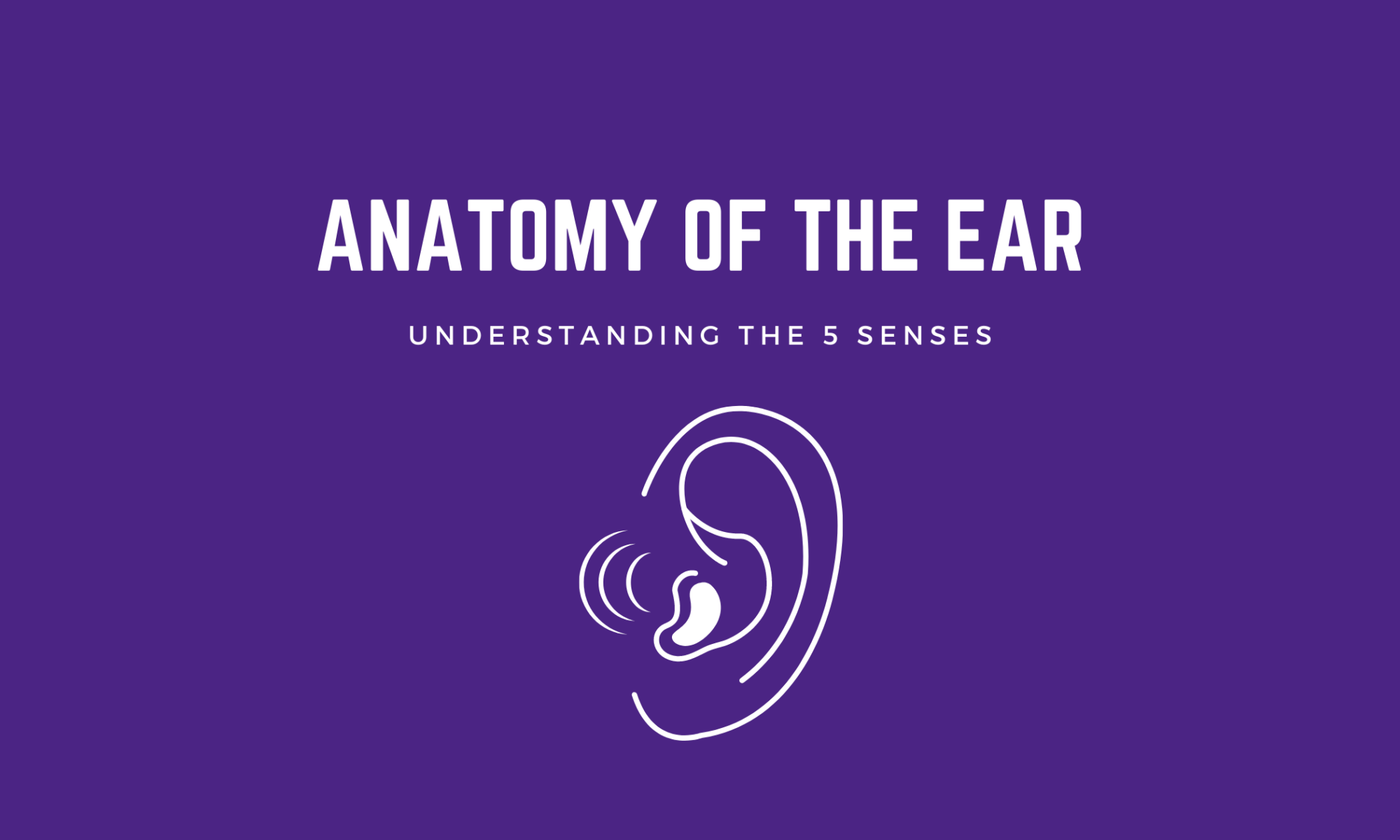Enhance the basic 5 senses lesson with anatomy of one of the five senses.
We chose to deep dive into learning about the anatomy of an ear because we are focusing on our sense of hearing.
Materials
Ear nomenclature book download:
- $3.00 USD available on Montessori Print Shop
- There are 3 part cards available for $3.00 USD, as well.
- Link to a free online resource

Ear 3-Part Cards
A 3-part card format means each part of the object you’re learning about has 1 labeled card, 1 card without a label, and 1 label.
This work is presented to the child over the following 3 steps.
Step 1: Start with 3 Parts
- Identify the parts using the labeled cards.
- Lay the first picture card on the table and say “This is an ear.” (have the child repeat each name after you).
- Lay down the next card – “This is the auricle.”
- Then, “this is the auditory canal.”
- “Together they make up the outer ear.”
Once all three cards have been identified review them one last time by pointing to each one and saying the name, making sure the child repeats each name.
Step 2: Recognition and Association
- Re-arrange the cards and ask the child for a specific part.
- “Can you show me the auditory canal?”
- “Can you place the auricle here?” (pointing to a spot on the table).
- Re-arrange the cards again and ask for each part by name.
- Have the child close their eyes while you rearrange the cards.
- Request the cards again, making sure the child is repeating the names clearly and properly.
This period is much longer than the first to extend the handling and movement of the cards.
This handling, movement, and repetition increases their memory and will solidify their recognition of the names.
There are many variations that can be used in the second period that will hold a child’s interest. Like using positional words and having the child place the cards within a specified order.
The movement will make the lesson more attractive and help the child be successful, so be creative!
Step 3: Recall
It is important to proceed to this period only if you feel the child will be successful.
- Place the 3 cards back in front of the child.
- Point to the first card and ask “What is this?”
- Repeat with the second and third cards.
This is the ‘testing’ period. This is, in fact, the very first time you have asked the child to verbally recall the names of the parts.
If the child is unable to recall the name of the parts, give the name again and casually end the lesson without making the child feel as though they’ve failed.
If the child is successful and is still interested, continue on with the next 3 parts.
Repeat until all of the cards have been taught.
Extension: Reading
If the child is reading, they can then use the labels to identify the parts.
- Have the child read a label and place it below the picture card.
- They can use the card with the label attached (the control card) to check their labeling work.
Extension: Creating a Booklet
- Child uses the blackline master to color in each “part”
- Label them if they are able.
- If not, you can write the labels for them.
- Put the colored and labeled blackline masters together and the child now has a booklet with all the parts of the ear.

Ear Nomenclature Book
Once all of the parts are known by the child you can introduce them to the book. Depending on the reading ability of the child, you may have to read it all to them, or perhaps they can read portions of it themselves.
The book has a page for each part of the object you’re learning about. A short description of the part is on the opposite page.
- Print pages.
- Paper cutter with adult supervision.
- Hole punch.
- Thread yarn or ribbon horizontally
- Tie a knot or bow to secure.
Ear Anatomy control sheet
We will laminate or frame a colored ear anatomy control sheet for the child to use as reference.
Pictures to come, follow us on IG @maedaymontessori
Ear Anatomy coloring sheet
Children can create a color map or parents can prepare a color by number.

